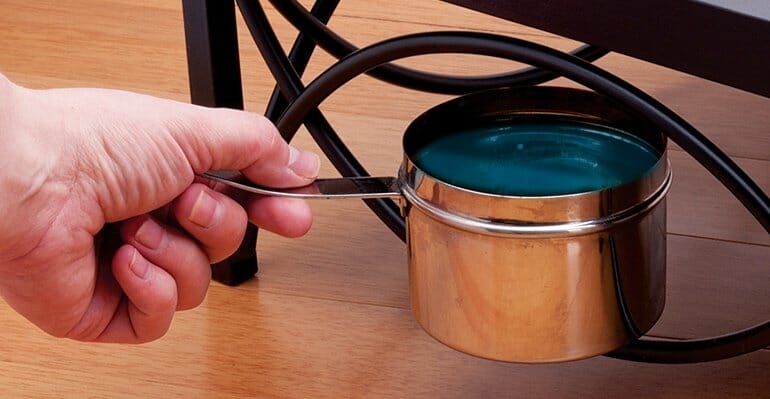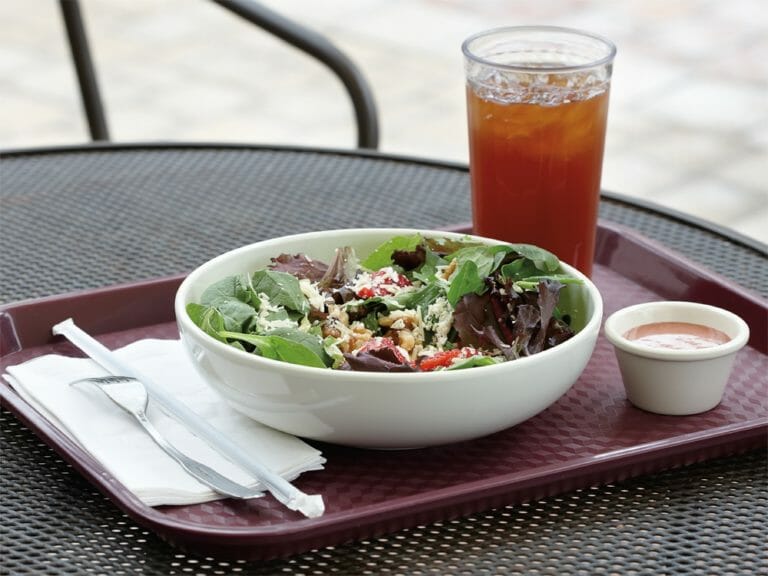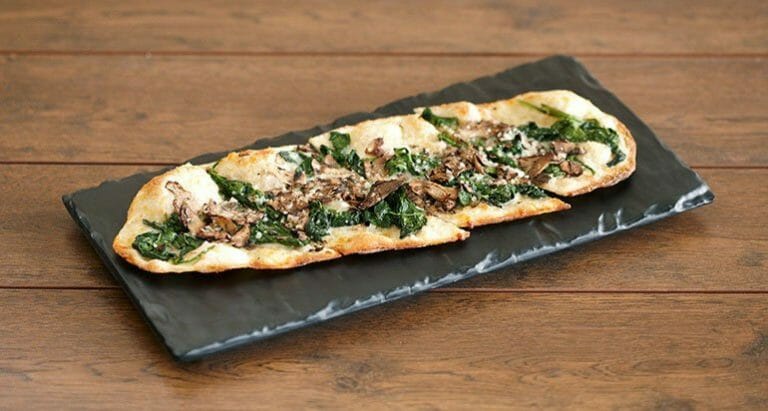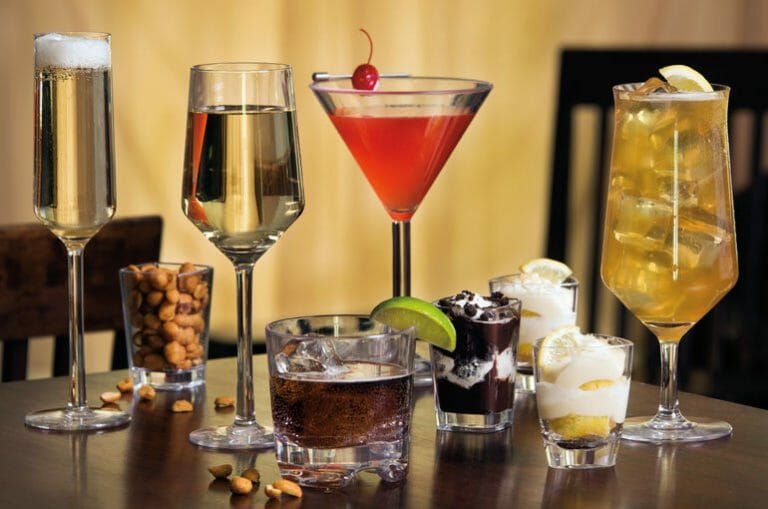Which is Better for Off-Site Catering: Chafing Fuel, Induction Cooktops, or Butane Gas?
Off-site caterers encounter different environments and resources at nearly every event site, requiring more problem solving and adaptability skills than most traditional commercial kitchens demand. If your catering menu includes hot food options, one constant you’ll need to navigate is finding the right tool for providing direct or indirect heat, or possibly both.
We’re going to take a look at how chafing fuel, induction cooktops, and butane gas heat sources solve for different resources, rules, and restrictions that off-site caterers often face while serving at various venues.
Chafing Fuel for Off-Site Catering
Chafing fuel is a popular option because of its small size, light weight, heating/warming versatility, and environmentally-friendly options.
The fuel, housed in nearly pocket-sized canisters, produces a small flame via either a gel or liquid. Two-, four-, and six-hour spans are the main burn time options on the market, offering caterers plenty of options for different types of events.
Depending on your needs, you can also create different heat intensities. Fuel canisters with a wick – found with the liquid form of the fuel – offer focused, direct heat. When using chafing fuel beneath a griddle or grill in an action station setting, you can strategically form hot and warm areas on the same surface. Essentially, you’re creating two functional work spaces on a single implement, allowing you to minimize the amount of equipment needed – something most caterers appreciate. You can achieve the same result using wicks under chafing dishes if it fits your needs.
To manage the intensity of the heat, encase the chafing fuel canister with an adjustable lid. You can increase or decrease the amount of heat, or safely snuff out a flame at the end of service.
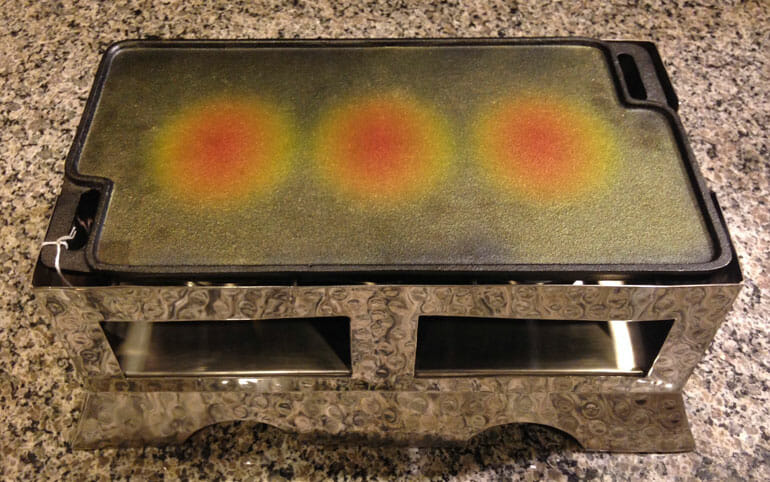
Pictured: rendering of hotspots created by chafing fuel
If your brand is aligned with sustainability and environmental friendliness, or if your client requests such products, it’s fairly easy to find biodegradable chafing fuels manufactured with renewable resources.
Another benefit of chafing fuel is that you don’t need an electrical outlet, which allows caterers quite a bit of freedom regarding where they can set up shop.
Take control of your reading experience. Leave a comment below telling us what interests you and we’ll write about it!
It’s easy to see why off-site caterers enjoy chafing fuel, but it does have a couple drawbacks depending on the event needs and site:
- It’s not great for cooking
- It uses open flame
Chafing fuel is great for heating and warming food prepared ahead of time, but not so much for start-to-finish cooking. However, watch out for uneven heat as chafing fuel tends to center heat in one spot and stainless steel pans don’t always evenly distribute heat.
Some indoor event spaces don’t allow open flame. Even if a venue allows open flames outside, it’s entirely possible that a burn ban pops up right before a gig that was booked months before. Let’s take a look at an excellent, flame-free option that you can pivot to if you find yourself suddenly unable to use open flame.
Induction Heat for Off-Site Catering
Although induction heat technology has been around for several decades, it’s only begun to gain popularity in the States over the last handful of years. Caterers can easily find portable induction cooktops in single- and double-burner setups.
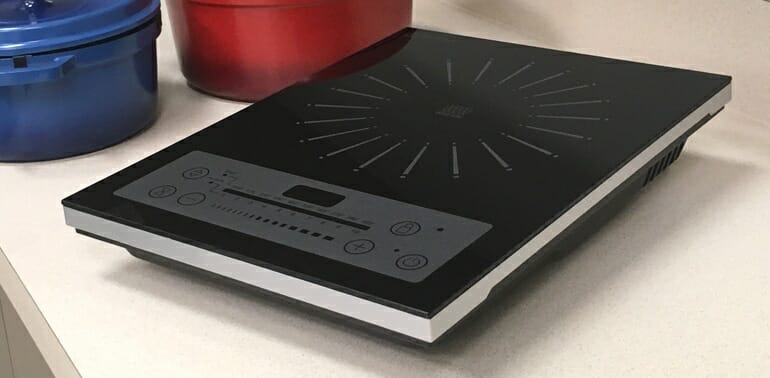
Pictured: portable single induction cooktop
Induction heat is unique in that it uses an electromagnetic coil as the heat source, which is housed under a ceramic or glass surface. To activate the electromagnetic coil, all you have to do is use induction-ready cookware. If you’re not sure whether your cookware is induction-ready, just put a magnet to it. If the magnet sticks, you’re in business.
On a more detailed level, any cookware that contains iron is induction-ready. Cast iron and stainless steel are naturally compatible with induction heat. Aluminum is not. However, induction-ready cast aluminum cookware is now available, coupling the benefits of induction heat with the light weight and excellent thermal conductivity of aluminum.
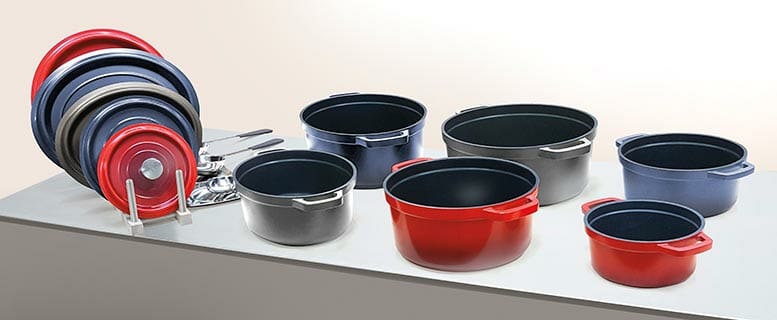
Pictured: Heissª induction-ready cast aluminum cookware
In addition to the unique way induction cooking creates heat, the heat source itself is also unique: It comes from the cookware instead of the cooktop. Heat is generated so efficiently that it’s sometimes possible to boil a pot of water within 60 seconds. And when you remove the cookware, the cooktop cools off just as fast because the heat source is no longer there.
The qualities of induction heat, as well as the portable nature of many induction cooktops, lend themselves well to off-site catering. The rapid heating and cooling make for quick setup and breakdown times. It’s also a safety benefit because the cooktop, pots, and pans don’t stay hot once they’re not in contact with each other, which reduces the opportunity for staff or guests to burn themselves.
Not finding the answers you want? Leave a comment telling us what we’re missing and we’ll cover it for you.
Induction heat also offers caterers versatility because it can be used with higher heat applications for cooking, like at an action station, or at lower heat for keeping food warm. Chafing fuel is great for warming and heating food prepared before events, but it’s not great for cooking. Induction cooktops allow for traditional stovetop-style cookware, griddles, and grills.
However, despite all its benefits, you should be aware of a couple watch-outs:
- Accessibility of electrical outlets
- Weight of your cookware, especially if you’re using cast iron
Induction bases must be plugged in to work. On the surface, it’s as easy as finding an outlet. But in a more practical sense, there may be a shortage of outlets, difficult-to-reach outlets, or you may find yourself outdoors with none at all.
Remember that most induction cooktops have glass or ceramic surfaces, so be sure to check the maximum weight capacity. Stainless steel and aluminum cookware should be light enough not to cause glass or ceramic to break. But cast iron is notoriously heavy, so that’s where you want to make sure you’re not exceeding the weight limit.
Let’s say that your next event requires cooking, allows open flame, but doesn’t have any (or enough) electrical outlets. What’s a caterer to do? Butane gas, of course.
Butane Gas in Off-Site Catering
Like induction heat, butane gas can easily be found in portable sizes with single- and double-burner options. However, unlike induction, butane is a gas-powered heat source with an open flame that does not require electricity to operate. All you need is either a butane cartridge or fuel can, and of course, a butane stove.
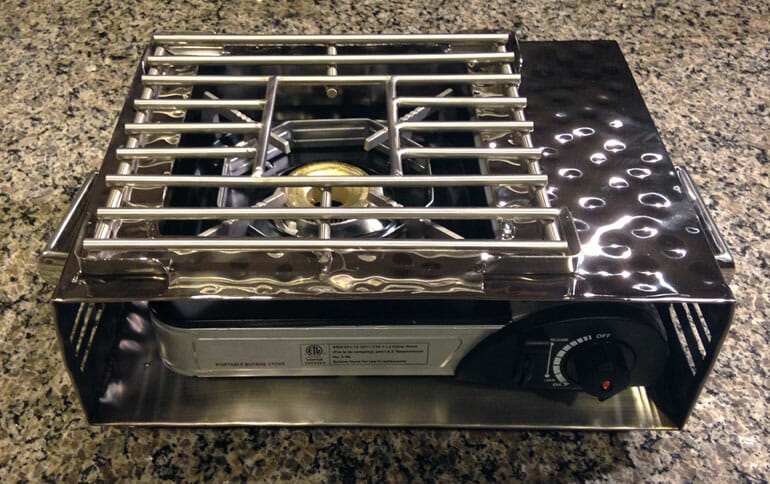
Pictured: portable butane gas burner with an action station cover
Butane and chafing fuel share some characteristics, like producing an open flame with manageable heat intensity. However, butane heat is generally more intense and closer to the cookware, griddle, or grill than chafing fuel typically gets. Butane gas generally lends itself to direct heat and cooking more than it does for warming food for display. So if your event calls for cooking, it’s a great choice, but if you’ll be preparing food ahead of time and only need to keep it warm during service, chafing fuel is probably a better fit because it’s smaller and lighter weight.
Some butane cooktops can have a utilitarian look, much like a camping stove. You can dress them up for action station use at off-site catering events using shells that add an elegant touch and protect your flame from wind.
Because butane gas uses an open flame as the heat source, it heats quickly. It’s not quite as fast as induction cooking, but not as slow as chafing fuel – it’s a nice happy medium. The quick heating makes it useful in catering because you don’t have to wait very long for your implements to reach desired temperatures. But it will take just a bit longer to cool down than induction cookware when it’s time to clean up. If you break down your butane station first, it will likely be cool enough to pack up by the time everything else has been taken care of.
Chafing fuel, induction heat, and butane gas each possess useful, versatile qualities that caterers have long enjoyed. The nuanced difference between the three heat sources allow them to meet a variety of challenges that off-site catering can present. Keeping all three on-hand can help you create a high degree of nimbleness, opening your catering services to all sorts of events. If you’re interested in learning more about cast iron and induction-ready cast aluminum, we’ve got you covered in “Enamel Cast Iron vs Cast Aluminum Induction Cookware for Foodservice.”
{{cta(‘8d97949d-5da3-4d20-be7d-c81134328a61’)}}

